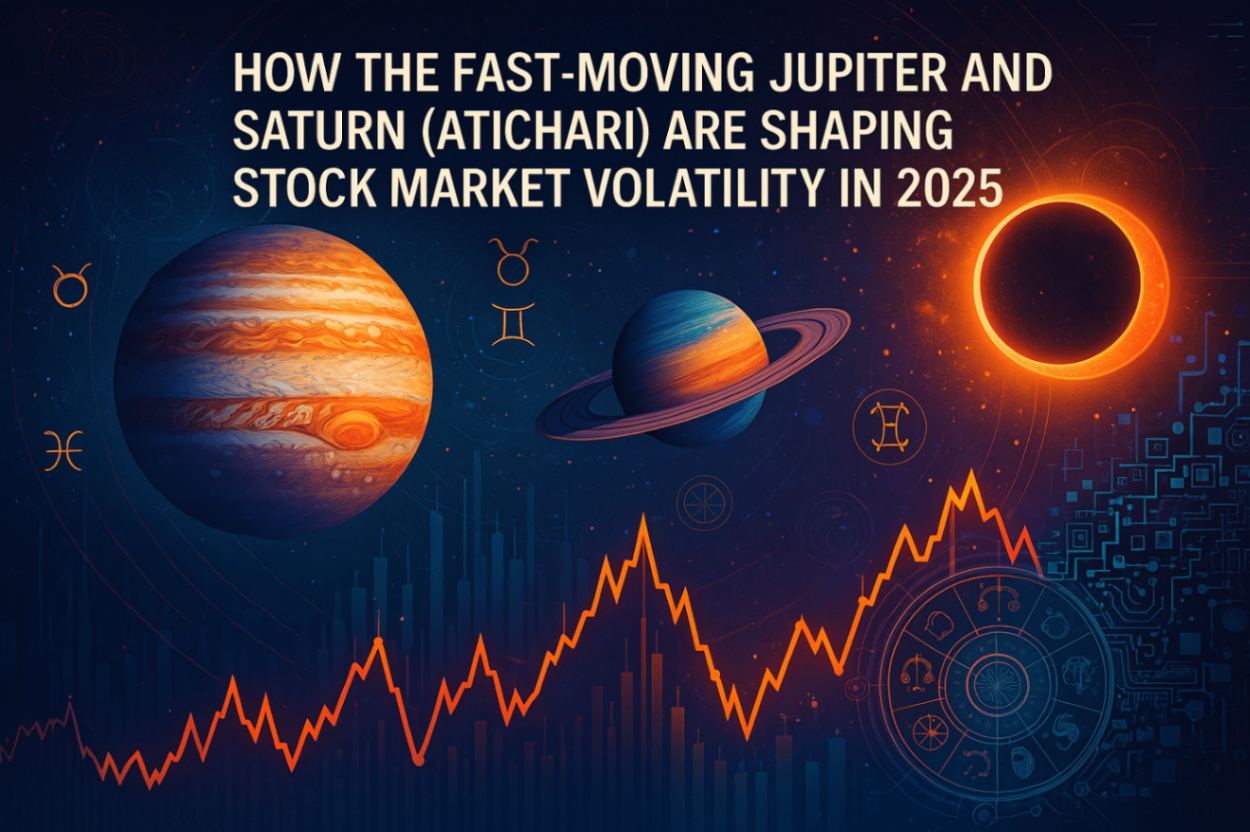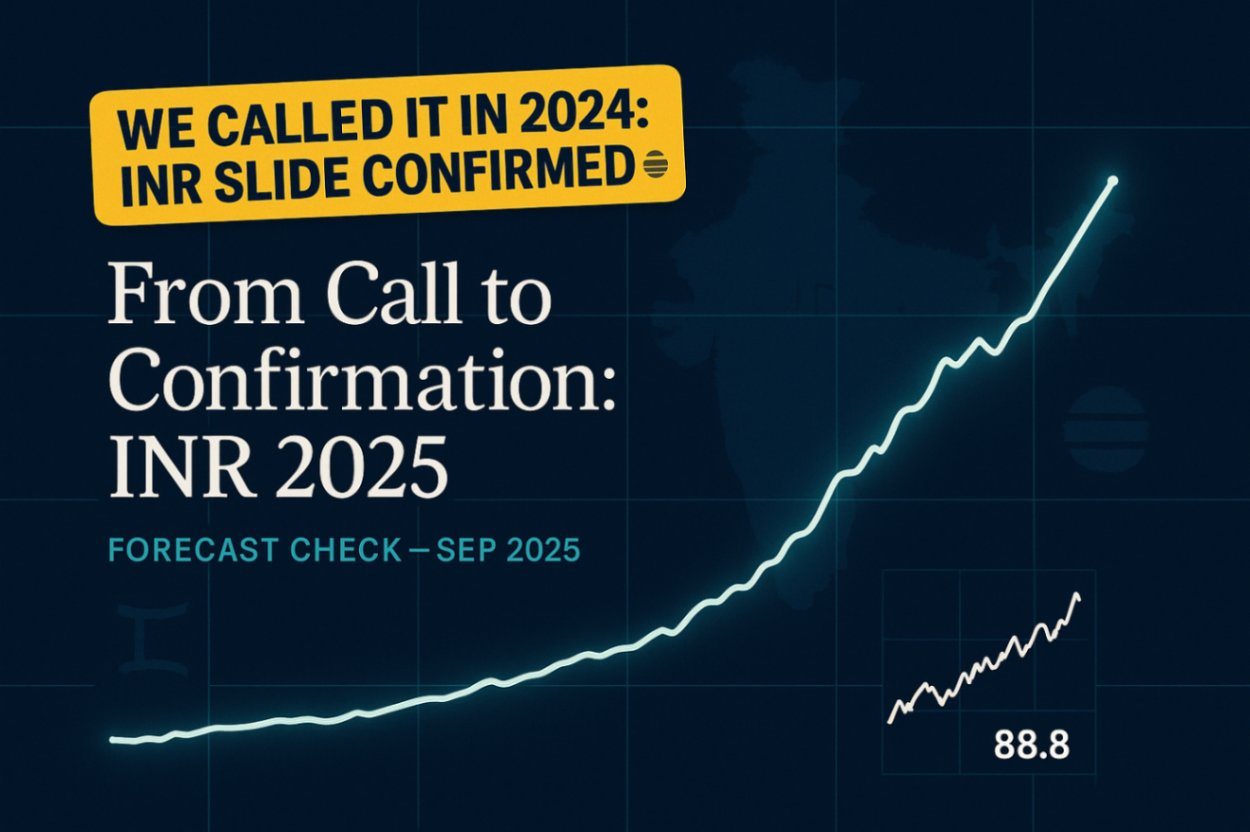🪐 The Speed of Jupiter and Saturn: A Barometer for Economic Shifts
In Vedic astrology, Jupiter (Guru) and Saturn (Shani) are considered slow-moving planets—Brihaspati and Shanischarya—because they usually take around 12 and 30 years, respectively, to complete their zodiacal cycles. Their transit speed, however, can vary due to retrograde and direct motion patterns, and this speed has a direct bearing on macroeconomic trends and market behavior.
Let’s break it down:
🐢 Slow Speed (Stationary or Retrograde)
When Jupiter or Saturn is moving slowly or becomes stationary, especially near their retrograde or direct turning points, the energy is said to internalize or intensify. In mundane astrology:
Markets become cautious or stagnant. There’s hesitation among investors.
Policy changes (central banks, governments) may get delayed or backfire.
Economic reforms may appear, but execution becomes sluggish.
Historically, this phase coincides with correction phases, bearish trends, or hidden instabilities coming to light.
E.g., when Saturn was slow/stationary in late 2022, crypto markets crashed after months of sideways trading.
🐘 Normal Speed (Steady Transit)
In their average or normal speed, Jupiter and Saturn represent predictability and sustainable growth.
Markets tend to stabilize or move in a defined trend.
Inflation, GDP growth, and employment follow more expected patterns.
Investors exhibit confidence due to clarity in macroeconomic signals.
This is the ideal time for policy rollouts and long-term investments.
E.g., Saturns normal-paced movement in 2016–2017 saw steady bull runs in equity markets globally.
🦅 Fast Speed (Atichari Motion)
When either planet moves unusually fast (Atichari), the energy is disruptive, accelerated, and transformational. It triggers:
Sudden surges or crashes in markets.
Major currency swings, bond yield movements, and capital reallocation.
Rise of speculative sectors (like AI, EVs, cryptocurrencies).
Geopolitical shifts, trade war escalations, or emergency policy actions.
Reversal of prior market trends—what was working no longer does.
In AI-driven, algo-sensitive markets, this causes amplified volatility.
🧠 Insight: Fast-moving Jupiter brings rapid optimism (bullish rallies), while fast-moving Saturn brings structural disruption (bearish corrections). Together, they can confuse traditional indicators, especially around eclipses and nodal shifts (Rahu-Ketu axis).
🧭 Current Scenario: Hyper-Acceleration
Jupiter is moving nearly 40° in 7 months, vs. its usual ~15°. It will retrograde at 1° Cancer by October 2025.
Saturn is moving 7° in just 3 months—double its average speed.
This Atichari movement signals rapid global shifts, increased volatility, and fast economic cycles.
Simultaneously, Rahu-Ketu are slowing down in April (eclipse period) and will cross signs in May, adding to unpredictability.
🔍 Which Sectors Are Most Sensitive to Planetary Speed?
| Sector | Slow Speed Impact | Fast Speed Impact |
|---|---|---|
| Technology / AI | Innovation delays | Explosive innovation, hype cycles |
| Finance / Banking | Credit tightening, regulation | Sudden rate shifts, liquidity crunch |
| Commodities / Energy | Stagnation in pricing | Price spikes or crashes |
| Real Estate | Policy delays | Sudden boom or bust cycles |
| Healthcare / Pharma | Regulatory holdups | Fast-tracked approvals, speculation |
✨ Conclusion
The speed of Jupiter and Saturn acts like an astrological accelerometer for global economic patterns. While slow speeds test patience and structures, fast speeds (Atichari) shake up the system, creating instability, transformation, and opportunity.
As both planets zoom through the zodiac in the coming months, investors, policymakers, and astrologers alike must be ready for a world that moves faster than logic can explain—driven by cosmic accelerators.


















